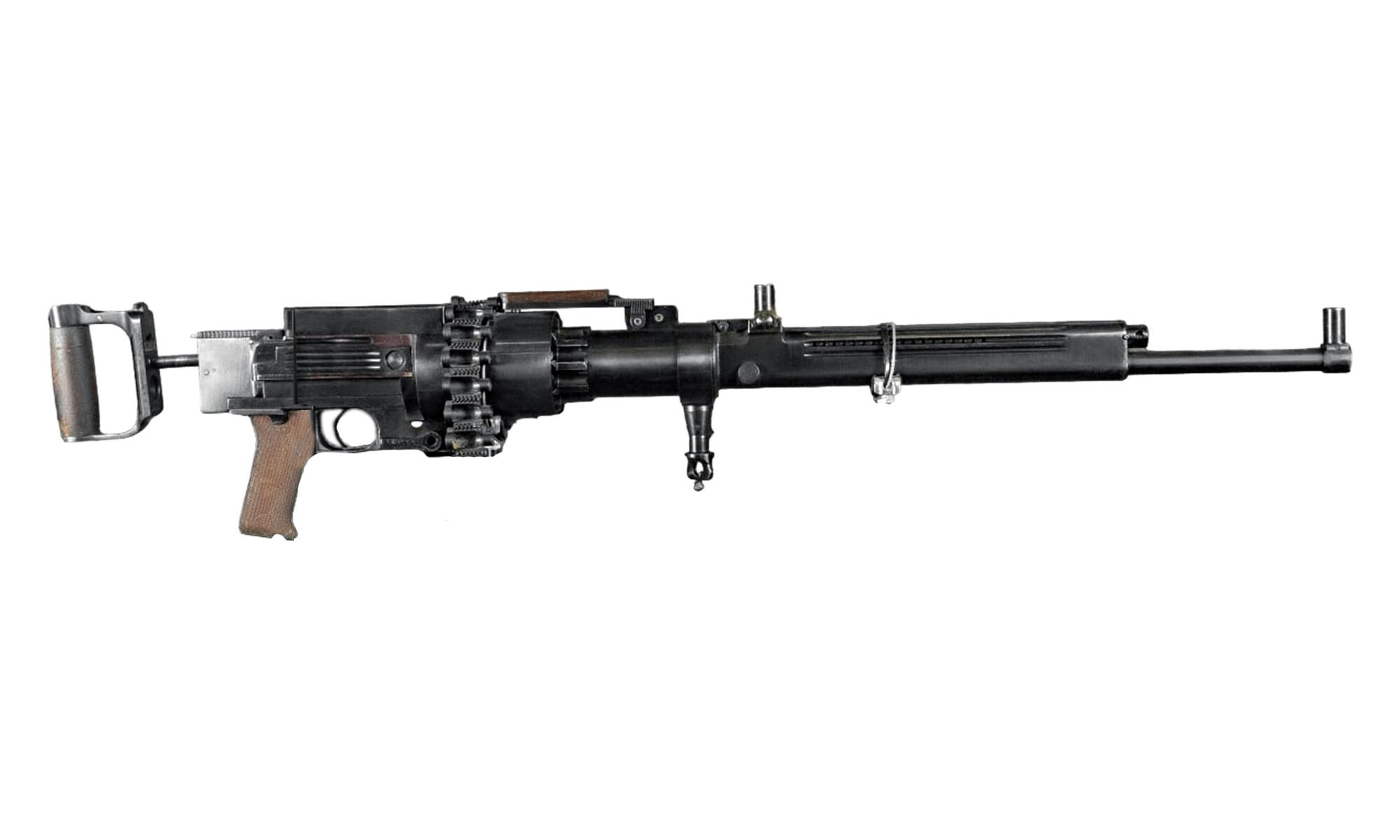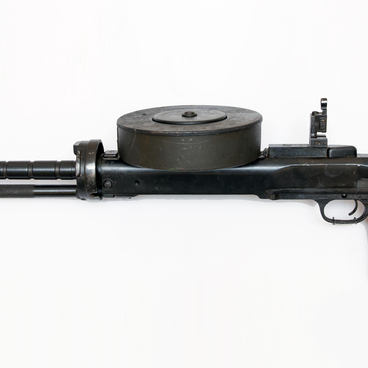The rapid-fire machine gun from the collection of the Victory Museum was designed specifically for the Air Forces in 1939. It was developed by two Soviet engineers — Boris Shpitalny and Irinarkh Komaritsky.
The story of this weapon began in 1920 when Boris Shpitalny decided to create a new firearm. He planned to design a rapid-fire machine gun but at that moment, he lacked the necessary experience and knowledge. Only eight years later he finished his work and submitted it to a special committee. The design of his machine gun stood out with its bold decisions for certain structural elements. However, it still required modification, and another talented weapons designer Irinarkh Komaritsky joined Shpitalny to help him improve the prototype faster.
Finally, in 1930, the production of the first batch of seven machine guns was approved by the artillery directorate, and two years later, the new weapon was presented to Kliment Voroshilov, the People’s Commissar for Defense of the Soviet Union. Soon, the machine gun was approved by the government and adopted into service.
It was the world’s first aircraft system of this type propelling the Soviet Union to the top in this area of weaponry.
The Shpitalny-Komaritsky rapid-fire machine gun was produced at the Tula Arms Plant and was known as the ShKAS. It was first used in action during the Spanish Civil War. Until the end of the Great Patriotic War, this was the firearm installed on many Soviet aircraft and widely used in battles.
The ShKAS was operated by a feed cage and a gas piston. This ensured the high rate of fire of the machine gun. A shooter did not need to reload it and could provide rapid fire.
The designers also intended to adapt the machine gun for the ground forces and navy, but this attempt was not successful. It turned out that the machine gun required a complicated cooling system and was too sensitive to dirt.
By the beginning of the Great Patriotic War, this machine gun became the main weapon used by Soviet fighter planes and attack bombers.
The story of this weapon began in 1920 when Boris Shpitalny decided to create a new firearm. He planned to design a rapid-fire machine gun but at that moment, he lacked the necessary experience and knowledge. Only eight years later he finished his work and submitted it to a special committee. The design of his machine gun stood out with its bold decisions for certain structural elements. However, it still required modification, and another talented weapons designer Irinarkh Komaritsky joined Shpitalny to help him improve the prototype faster.
Finally, in 1930, the production of the first batch of seven machine guns was approved by the artillery directorate, and two years later, the new weapon was presented to Kliment Voroshilov, the People’s Commissar for Defense of the Soviet Union. Soon, the machine gun was approved by the government and adopted into service.
It was the world’s first aircraft system of this type propelling the Soviet Union to the top in this area of weaponry.
The Shpitalny-Komaritsky rapid-fire machine gun was produced at the Tula Arms Plant and was known as the ShKAS. It was first used in action during the Spanish Civil War. Until the end of the Great Patriotic War, this was the firearm installed on many Soviet aircraft and widely used in battles.
The ShKAS was operated by a feed cage and a gas piston. This ensured the high rate of fire of the machine gun. A shooter did not need to reload it and could provide rapid fire.
The designers also intended to adapt the machine gun for the ground forces and navy, but this attempt was not successful. It turned out that the machine gun required a complicated cooling system and was too sensitive to dirt.
By the beginning of the Great Patriotic War, this machine gun became the main weapon used by Soviet fighter planes and attack bombers.




